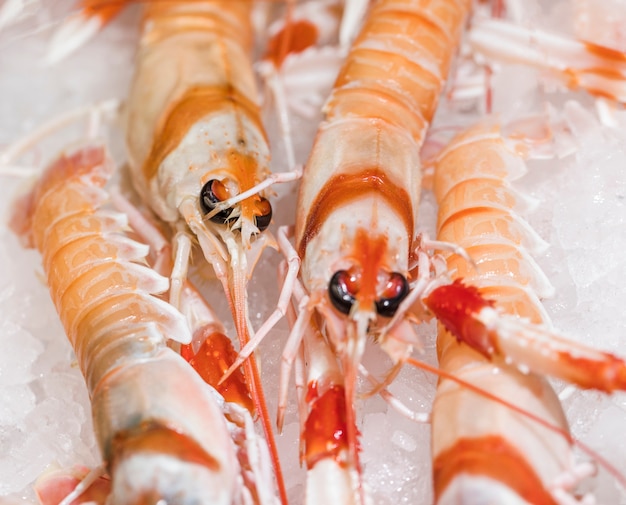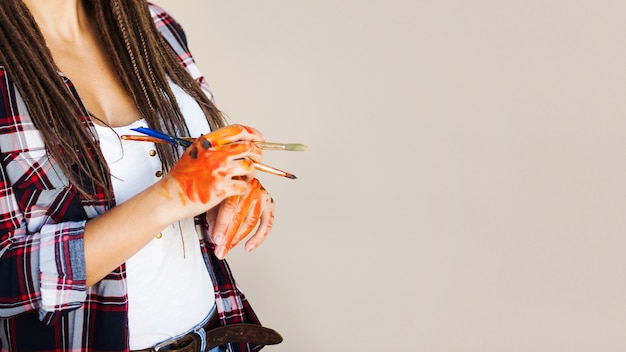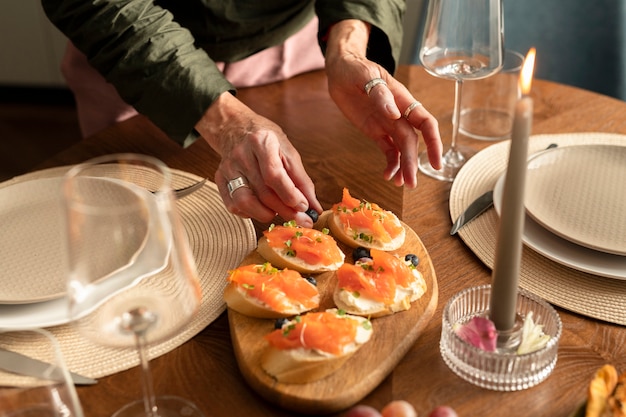lobster tails – oh, the sheer luxury! There’s something about that sweet, delicate meat that practically begs for a celebratory feast. But let’s face it, we all know the nightmare of overcooked lobster: tough, rubbery, and just plain disappointing. Undercooked? Well, that’s a different kind of tragedy. So, how do you achieve that perfect balance of tender, juicy, and perfectly cooked lobster? That's where the magic of knowing the right lobster tail cooking time comes in.
Now, I've had my share of experiences in the kitchen with lobster tails. I’ve gone from the eager novice, to the seasoned chef (most of the time, anyway). I’ve experienced the thrill of a perfect lobster dinner, but I’ve also had my fair share of, well, let’s just say “learning experiences.” And through it all, I’ve learned a thing or two about cooking lobster tails to perfection. I’m here to share those insights with you, to help you avoid those lobster tail disasters and achieve culinary greatness. So grab your trusty chef’s knife (or a good pair of kitchen shears), and let’s embark on this journey to lobster tail nirvana!
Part 1: The Basics of Cooking Lobster Tails

First things first, it’s all about choosing the right lobster tail. This is where the journey to perfect lobster tails really begins.
Choosing the Right Lobster Tail
Freshness is absolutely paramount. Look for lobster tails with a bright, reddish-orange shell, which indicates a lively, fresh specimen. Avoid any tails with a dull or discolored shell – that's a telltale sign of spoilage. The texture is important, too. A firm, springy shell is a good indicator of quality. And if you can smell a briny, ocean-fresh aroma, you’re on the right track.
Getting Ready for the Cook-Off
You’ve got your lobster tails. Now what? Before you get too excited and jump into cooking, give those tails a quick rinse under cold running water. This helps to remove any impurities and prepare them for their culinary transformation.
Next, you’ve got a couple of options:
- Keep the shell on: This is the classic approach, and it's the best way to preserve the flavour and moisture of the lobster. The shell acts like a protective shield, ensuring the meat cooks evenly and retains its natural juices. You'll also be able to enjoy the wonderful flavour of the shell itself, a subtle, briny goodness that adds an extra layer of depth to your meal.
- Remove the shell: If you prefer, you can remove the shell. This is great if you want to serve the lobster tails in a more elegant way, or if you have a smaller pot and need to save space.
Whichever method you choose, make sure to cut a small slit down the center of the tail. This helps steam to escape during cooking, allowing the meat to cook evenly and preventing it from becoming tough. It’s a small detail, but it makes a big difference in the final result.
Part 2: Lobster Tail Cooking Methods: The Lowdown

There are several methods for cooking lobster tails, each offering a unique flavour profile and texture. From the tried-and-true classics to more adventurous options, I’ve got you covered.
1. Boiling: A Classic Approach
boiling lobster tails is a tried-and-true method that’s simple and straightforward, perfect for beginners.
Here’s the lowdown on boiling lobster tails:
- Bring a large pot of salted water to a rolling boil. The salt adds flavour and helps the water reach a higher temperature, ensuring a faster cooking time.
- Add the lobster tails to the boiling water, making sure they are completely submerged.
- Cook for 8-10 minutes for a 1-pound lobster tail. For smaller tails, adjust the cooking time down; for larger tails, increase the cooking time.
- Once cooked, drain the lobster tails and serve. You can serve them hot or cold, depending on your preference.
2. Steaming: A Gentler Option
Steaming is a gentler way to cook lobster tails, resulting in a tender and succulent product. It’s a great method for preserving the moisture and delicate flavour of the lobster.
Here’s how to steam lobster tails to perfection:
- Fill a steamer pot with water and bring it to a boil.
- Place the lobster tails in the steamer basket, ensuring they're not overcrowded.
- Cover the steamer and cook for 8-10 minutes for a 1-pound lobster tail. Adjust cooking time as needed for smaller or larger tails.
- Once cooked, remove the lobster tails from the steamer and serve.
3. Grilling: A Smoky, Charred Delight
For a smoky, chargrilled flavour, grilling lobster tails is a fantastic option. It adds a beautiful smoky depth to the delicate sweetness of the lobster.
Here’s what you’ll need to do:
- Preheat your grill to medium-high heat.
- Place the lobster tails on the grill, shell-side down.
- Cook for 5-7 minutes per side, or until the meat is opaque and cooked through.
- If you’re feeling adventurous, brush the tails with melted butter or a garlic herb sauce during grilling.
- Remove from the grill and serve.
4. Baking: A Simple and Convenient Option
Baking is a simple and convenient way to cook lobster tails. It’s a great option if you’re looking for a hands-off method.
Here’s how to bake your lobster tails to perfection:
- Preheat your oven to 400°F (200°C).
- Place the lobster tails on a baking sheet lined with parchment paper.
- Bake for 12-15 minutes for a 1-pound lobster tail. You can adjust the baking time depending on the size of the tails.
- Once cooked, remove from the oven and serve.
Part 3: Knowing When Your Lobster Tail is Perfectly Cooked

Okay, so you’ve chosen your cooking method. Now, how do you know when that lobster tail is ready to eat? The good news is, it’s actually quite easy to tell.
1. The Colour Test
The shell of the lobster tail will turn a vibrant, bright red when cooked. It’s a clear signal that the meat inside is also cooked through.
2. The Flesh Test
When the lobster tail is cooked, the flesh will become opaque and firm. You can also gently press on the meat – it should spring back when you remove your finger. This indicates that the meat is no longer raw.
3. The Meat Test
If you’re still unsure, you can always check the meat itself. Use a sharp knife or kitchen shears to cut into the thickest part of the lobster tail. The meat should be firm and cooked through, with no traces of pink or translucent areas.
Part 4: Lobster Tail Cooking Time: Breaking It Down
We’ve touched on cooking times, but let’s get into some specifics. Here’s a table with approximate cooking times for lobster tails of different sizes, for each cooking method:
| lobster tail size (lbs) | Boiling/Steaming Time (minutes) | Grilling Time (minutes per side) | Baking Time (minutes) |
|---|---|---|---|
| 0.5 | 6-8 | 4-5 | 10-12 |
| 1 | 8-10 | 5-7 | 12-15 |
| 1.5 | 10-12 | 6-8 | 15-18 |
| 2 | 12-15 | 8-10 | 18-20 |
Remember, these are just estimates. The actual cooking time may vary depending on the thickness of the tail, the heat of your stove or grill, and other factors. It’s always best to err on the side of caution and check the doneness of the lobster tail before serving. Overcooked lobster is a tragedy no one wants to experience, so it’s better to be safe than sorry.
Part 5: Beyond the Basics: Tips for Cooking Perfect Lobster Tails
You’ve got the basics down – you’re ready to cook lobster tails like a pro. But there are a few extra tips that can elevate your lobster tail cooking game from good to extraordinary.
1. Salt and Spice: The Secret Weapons
Don’t be shy with the salt. Adding salt to the cooking water or directly to the lobster tails themselves enhances the flavour and draws out the natural sweetness. Feel free to add a pinch of black pepper or other spices to the cooking water for an extra layer of flavour.
2. Butter, Butter, Butter: The Key to Tenderness
Lobster and butter are a match made in heaven. Melted butter drizzled over cooked lobster tails adds a rich, luxurious flavour and helps keep the meat moist. It’s like a hug for those delicate lobster muscles, ensuring they stay tender and delicious. For extra indulgence, try adding some chopped fresh herbs like parsley, chives, or dill to your butter. It adds a vibrant, fresh flavour that complements the lobster perfectly.
3. Lemon Squeeze: The Bright Finishing Touch
A squeeze of lemon juice brings out the sweetness of the lobster meat and adds a refreshing acidity, balancing out the richness of the butter and enhancing the overall flavour.
4. Serve with a Side: The Perfect Accompaniment
Lobster tails are delicious on their own, but they’re even better with a side dish. Consider serving them with a creamy risotto, grilled vegetables, or a simple salad. These side dishes provide a lovely contrast in texture and flavour, making the meal even more satisfying and enjoyable.
Part 6: Don't Be Afraid to Experiment: Unlocking New Flavors
The beauty of cooking is that there’s always room for experimentation. If you’re feeling adventurous, try adding a twist to your lobster tail recipes. Here are a few ideas to get you started:
- Spicy Lobster Tails: Add a kick to your lobster tails by sprinkling them with cayenne pepper or chili flakes before cooking. This creates a fiery flavour that will tantalise your taste buds.
- Garlic Lobster Tails: For a flavorful twist, add a few cloves of garlic to the boiling water or steam. The garlic infuses the lobster with a rich, savory flavour that is simply irresistible.
- Lemon Butter Lobster Tails: Combine melted butter with lemon juice, garlic, and herbs like parsley or dill. Drizzle this mixture over the cooked lobster tails for an explosion of fresh, bright flavours.
Part 7: The "Don'ts" of Lobster Tail Cooking: Avoiding Common Mistakes
There are a few things you definitely want to avoid when cooking lobster tails. These are the common pitfalls that can ruin an otherwise perfect lobster meal.
- Overcooking: Overcooked lobster tails will become tough and rubbery. The meat will lose its moisture and become dry and stringy. It’s a tragedy waiting to happen!
- Using Cold Water: Always start with boiling water to ensure that the lobster tails cook evenly and quickly. Cold water will take longer to heat up and can result in uneven cooking.
- Ignoring the Cooking Time: Always follow the suggested cooking times and check for doneness before serving. This will help you avoid overcooking and ensure that your lobster tails are perfectly cooked.
Part 8: FAQs: Everything You Need to Know About Lobster Tail Cooking
You’ve got the basics down, you’re ready to experiment. But there are always a few burning questions about lobster tails. Here are answers to some of the most common questions about cooking lobster tails:
1. How do I store lobster tails?
For best results, store lobster tails in the refrigerator for up to 2 days. You can also freeze them for up to 3 months, but the texture may be slightly affected after thawing.
2. What's the best way to thaw lobster tails?
The safest and most recommended way to thaw frozen lobster tails is in the refrigerator. Allow 24 hours for a 1-pound lobster tail to thaw completely. Thawing in the refrigerator ensures that the lobster tails thaw evenly and safely, without the risk of bacteria growth.
3. What happens if I overcook lobster tails?
Overcooked lobster tails will become tough and rubbery. The meat will also lose its moisture and become dry and stringy. It's a lobster tragedy – avoid it at all costs!
4. Can I reheat lobster tails?
Yes, you can reheat lobster tails, but it’s best to do so gently. You can reheat them in the oven, microwave, or stovetop. For the best results, try adding a little bit of butter or broth to prevent the meat from drying out.
5. How do I know if lobster tails are bad?
fresh lobster tails should have a bright, reddish-orange shell with a firm, springy texture. If the shell is dull or discolored, or if the flesh is soft or mushy, it’s best to avoid those tails. The smell is also a good indicator. Fresh lobster should have a briny, ocean-fresh aroma. If you notice any unpleasant smells, it’s likely that the lobster tail has gone bad.
Now you’re equipped with the knowledge to cook perfect lobster tails every time. Go forth, my friends, and conquer those crustaceans! Enjoy those juicy, tender morsels, and remember: every bite is a celebration of good food and good company.
Everyone is watching

How to Cook Frozen Lobster Tails Perfectly: A Step-by-Step Guide
RecipesLobster. Just the word conjures up images of lavish meals, special occasions, and a taste of luxury. But let's...

Pigs in a Blanket Cooking Time: How Long to Bake for Perfect Results
RecipesAh, pigs in a blanket. Just the name conjures up images of those delightful little parcels of crispy pastry en...

Pork Fillet Cooking Time: How Long to Cook It Perfectly
RecipesPork fillet, or tenderloin as it's sometimes called, is a real favourite in our house. It's so versatile, and...

The Ultimate Guide to Cooking Delicious Frankfurters
RecipesLet's face it, we all love a good frankfurter. It's a classic, simple, and always satisfying. But let's be rea...

The Ultimate Guide to Tender, Juicy Pulled Pork
RecipesRight, let's talk pulled pork. It's one of those dishes that just screams "comfort food," doesn't it? I mean...
